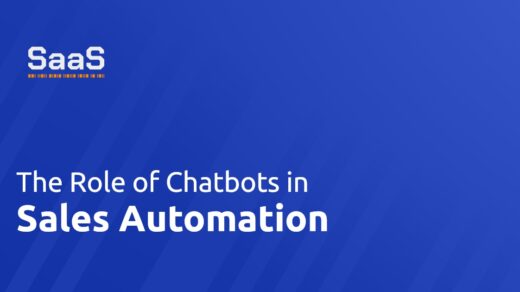Sales automation has emerged as a game-changer, promising increased productivity, streamlined processes, and enhanced customer experiences. However, despite its potential benefits, sales automation is often clouded by myths and misconceptions that hinder its adoption and hinder businesses from fully capitalizing on its capabilities. In this article, we’ll debunk some of the common myths surrounding sales automation and shed light on the realities of its implementation.
Myth 1: Sales Automation Is Only for Large Enterprises
One prevalent misconception is that sales automation is suitable only for large enterprises with vast resources and extensive sales teams. In reality, sales automation tools and strategies can be tailored to fit businesses of all sizes. Small and medium-sized businesses can also benefit from automating repetitive tasks, such as lead generation, follow-ups, and data entry. Modern sales automation solutions offer scalable options, making it accessible to organizations regardless of their size.
Myth 2: Sales Automation Leads to Job Losses
The fear of job displacement is a major concern when discussing automation in any industry, including sales. However, the truth is that sales automation is meant to enhance the capabilities of sales professionals, not replace them. By automating routine tasks like data entry and follow-up emails, sales teams can focus on more strategic activities that require human expertise, such as relationship-building, personalized communication, and negotiation. Sales automation frees up valuable time for sales reps to engage in high-value interactions that can drive better results.
Myth 3: Sales Automation Is Impersonal and Detrimental to Customer Relationships
One common misconception is that automation leads to impersonal interactions that harm customer relationships. While it’s true that poorly executed automation can come across as robotic, effective sales automation is all about personalization. With the right tools, businesses can gather valuable insights about their customers’ preferences and behaviors. This data enables sales teams to deliver tailored messages and offers, strengthening customer relationships and enhancing the overall customer experience.
Myth 4: Sales Automation Is Too Expensive
Cost concerns often deter businesses from exploring sales automation options. However, the return on investment (ROI) of sales automation can far outweigh the initial costs. Automated processes lead to increased efficiency and reduced human error, resulting in higher productivity and more closed deals. Moreover, the competitive advantage gained from improved lead management and customer engagement can result in long-term revenue growth that justifies the investment in sales automation tools.
Myth 5: Sales Automation Is a One-Size-Fits-All Solution
Some businesses are hesitant to adopt sales automation because they believe it requires conforming to a rigid, one-size-fits-all solution. In reality, sales automation can be customized to align with a company’s unique sales processes and goals. Whether it’s lead scoring, pipeline management, or email campaigns, modern automation platforms offer flexibility and customization options that allow businesses to tailor their approach while leveraging automation’s benefits.
Myth 6: Sales Automation Is Complex and Requires Advanced Technical Skills
The idea that implementing sales automation requires a deep understanding of complex technical systems can be intimidating. While there might be a learning curve associated with adopting new tools, many sales automation platforms are designed with user-friendliness in mind. These platforms often feature intuitive interfaces that allow users to set up and manage automated processes without extensive technical skills. Furthermore, many providers offer training and support to help businesses make the most of their automation investments.
Myth 7: Sales Automation Is a Quick Fix for Poor Sales Performance
Sales automation is a powerful tool, but it’s not a magic wand that can instantly fix all sales-related issues. Businesses must have a solid foundation in their sales processes and strategies before integrating automation. If there are fundamental flaws in how sales are conducted, automating those flawed processes will only magnify the issues. Sales automation should be seen as an enhancement to a well-structured sales approach, not a standalone solution for poor performance.
Myth 8: Sales Automation Is a Set-and-Forget Solution
Another misconception is that once sales automation is implemented, there’s no need for ongoing monitoring or adjustments. However, technology evolves, customer preferences change, and sales strategies need to adapt. Regularly assessing the effectiveness of automated processes, analyzing data, and making necessary adjustments ensures that automation remains aligned with business objectives and customer expectations.
In conclusion, demystifying sales automation requires dispelling the myths that surround its adoption. While it’s essential to acknowledge the potential challenges and pitfalls, understanding the realities of sales automation’s benefits is equally important. By tailoring automation to suit specific business needs, investing in training and support, and focusing on enhancing customer relationships, businesses can harness the true potential of sales automation and unlock new levels of growth and success. Embracing automation as a tool to empower sales teams, rather than replace them, is the key to navigating the modern sales landscape and staying competitive in an ever-evolving business world.








